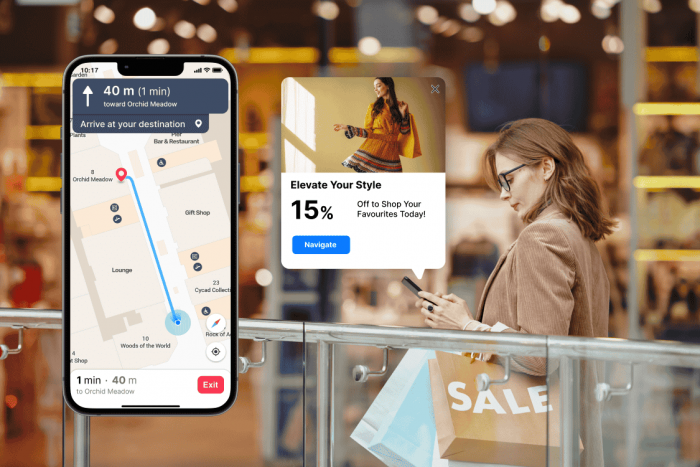With the evolving culture of the business world today, entrepreneurs have always taken a proactive approach to drawing more customers. This is where geofencing marketing completely changes the landscape of reaching potential patrons. Using location-based technology helps businesses attract people to their real shops. In this post, let’s take a closer look at geofencing marketing and how your business, as an end-user, can increase store visits multiplefold.
What is Geofencing Marketing
Geofencing is a virtual fence around a geolocation. When potential customers cross this boundary, they will be served localized advertisements or push notifications on their mobile devices. This method uses the mobile device's GPS, Wi-Fi, and cellular data for localization to send relevant and timely messages. The idea behind geofencing marketing is to connect with customers as they are making decisions—at the exact moment! With localized messaging, the potential for foot traffic skyrockets.
How to Build Successful Geofencing Campaigns

As you can see, a successful geofencing campaign does not just come to fruition. To begin with, businesses must figure out who they want to target. You can write more relatable messages by knowing who they are, what they want, and how they act. People tend to react positively when receiving a message that caters to their tastes. Hence, personalization is the key. Moreover, timing is important for the success of a geofencing campaign. The right messages are sent to the same customers during peak shopping hours, or at least when they can be expected to engage. With insights on customer data and trends, businesses know the best times to send notifications.
Choosing the Right Location
Choosing the right geographic area for geofencing marketing is imperative. Use effective locations with high traffic, such as shopping malls, city centers, or other places with lots of people moving or events, as they usually work well. Businesses can also ensure that they are attracting foot traffic by targeting areas with a higher concentration of potential customers. Competition is good in this regard. So, for example, if a retail store sets up geofences around competing stores, they could offer customers attractive discounts or offers through notifications when they cross the geofence where they would end up going to that store.
Crafting Engaging Offers
The effective outcome of geofencing marketing entirely depends on how appealing the offers are to you. It is conducive for a business to think of a promotional offer that would encourage people to act now. Special offers such as limited-time discounts, unique sales, or movement sales encourage consumers to visit the store. In addition, good and short messages will make offers more effective. Your customers should immediately grasp both the value proposition and how it works to their advantage. Using simple language keeps messages approachable and engaging.
Measuring the Impact
To measure the success of geofencing campaigns, businesses must monitor key performance indicators (KPIs). These insights are invaluable and can be obtained from metrics like conversion rates, foot traffic, and customer engagement. Through such data analysis, businesses can make better tweaks to their strategies and plan for future campaigns in a much more optimized way. Furthermore, insights from customers add value. Identifying customer experiences and tastes gives businesses a better shot at crafting future messages. Continuous evaluation and improvement will allow for continued success with geofencing marketing.
Addressing Privacy Concerns
Though geofencing marketing has advantages, it also brings privacy issues for consumers. This means businesses need to be transparent and explain customer data usage. Consent compliance and offering users an easy opt-out option will help build trust and comply with privacy rules. In addition, customer data should be taken care of and stored appropriately to ensure confidentiality and safety. A proven record of commitment to privacy can bolster both brand reputation and customer loyalty.
Conclusion
Geofencing marketing is a new way to attract customers and bring people to your store. Businesses, by wisely using location-based technology, can send messages that are more relevant to the probable customers to whom they can relate. This means knowing the target audience, timing the right message, and picking the right location when creating an effective geofencing campaign. It also does more to encourage geofencing marketing when you pair it with engaging offers and clear directions, ensuring effectiveness and customer privacy in the long term. Adopting geofencing marketing enables businesses to tap into the realm of digitally global marketplaces, ensuring they remain at least one step ahead and have that necessary foot traffic to drive sales.
Post Comment
Be the first to post comment!


